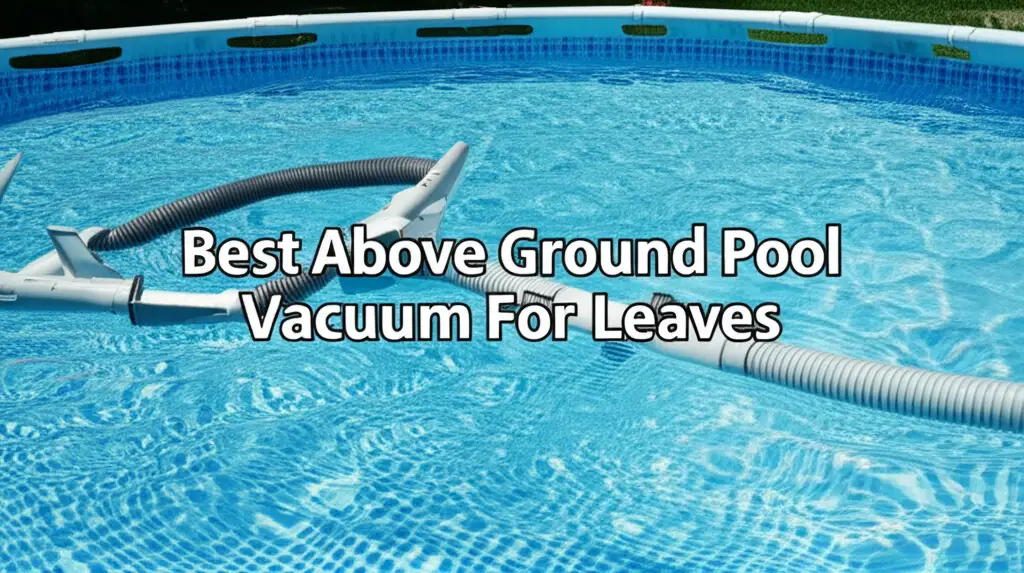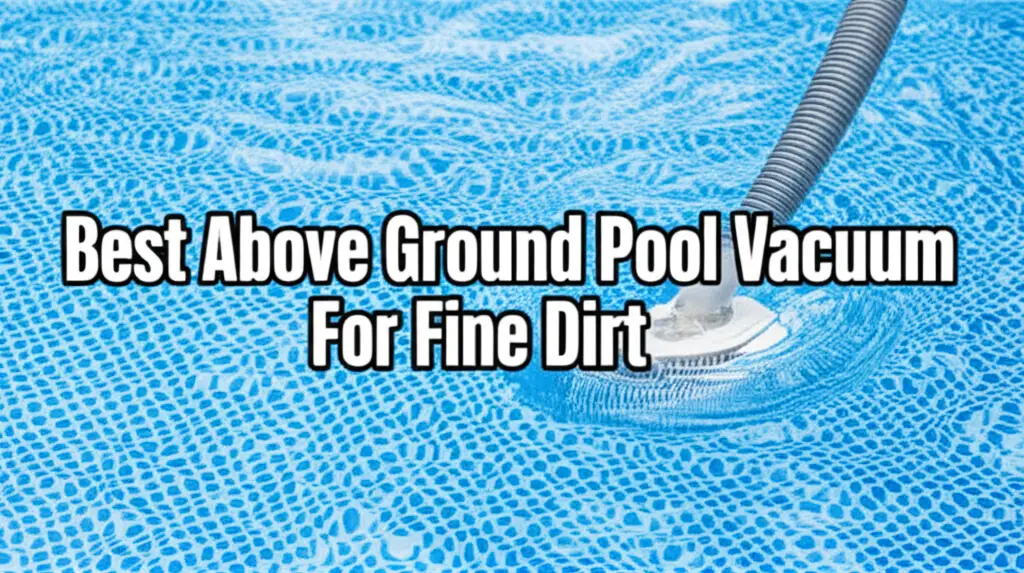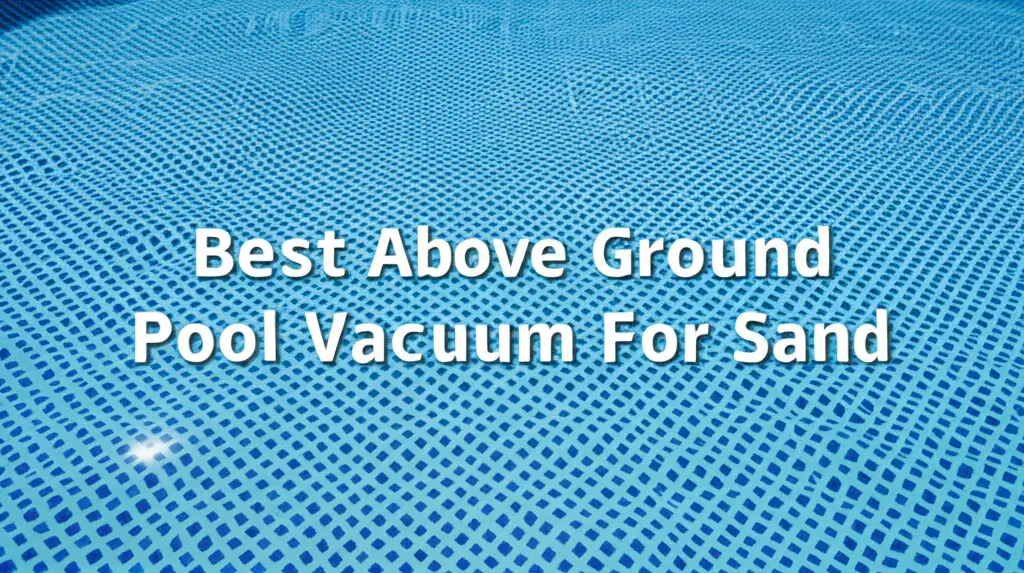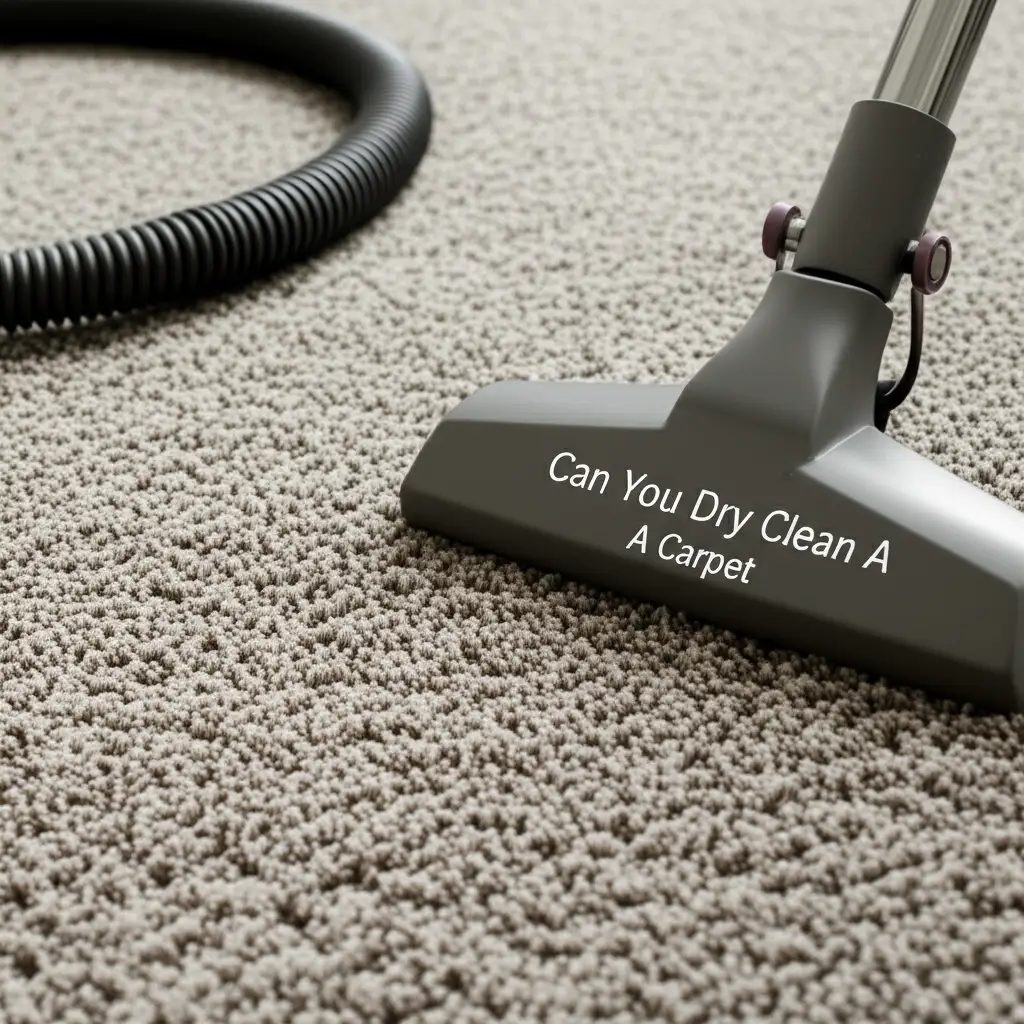· Mason Everett · Pool Maintenance · 18 min read
Best Above Ground Pool Vacuum For Leaves

Discovering the Best Above Ground Pool Vacuum for Leaves
A beautiful above ground pool offers much enjoyment during warm months. However, fallen leaves can quickly turn crystal-clear water into a murky mess. Clearing these leaves presents a unique challenge for pool owners. Standard pool skimmers often miss submerged leaves, and pool filters can clog quickly.
Finding the best above ground pool vacuum for leaves makes pool cleaning simple. This guide helps you pick the right tool for the job. We will look at different vacuum types. We will cover important features that make a vacuum good for leaves. By the end, you will know how to keep your above ground pool clean and inviting, free from unwanted leafy invaders.
Takeaway:
- Choose Wisely: Select a pool vacuum designed specifically for large debris like leaves.
- Consider Vacuum Types: Manual, suction-side, pressure-side, and robotic vacuums each have benefits and drawbacks for leaf removal.
- Prioritize Key Features: Look for strong suction, large debris bags, and good maneuverability.
- Maintain Regularly: Proper vacuum and filter care extends equipment life and keeps your pool clean.
- Prevent When Possible: Use pool covers or netting to reduce leaf entry.
The best above ground pool vacuum for leaves effectively removes large debris without clogging your filter. It should offer strong suction and a large collection bag to handle many leaves. Automated options provide convenience, while manual tools offer precise spot cleaning.
Why Leaves Are a Big Problem for Above Ground Pools
Leaves enter above ground pools easily, especially during fall or windy days. They float at first, then sink to the pool floor. Once submerged, leaves decompose. This process releases phosphates and nitrates into the water. These substances act as food for algae.
Algae growth turns your pool water green and cloudy. Decaying leaves also lower your pool’s pH level. This makes the water more acidic. Acidic water can damage pool liners and equipment over time. Leaves also clog your pool’s skimmer and filter system. A clogged filter means poor water circulation. This affects water quality and sanitation. I know from experience how quickly a clear pool can become full of leaves. It creates extra work and reduces swim time. Keeping leaves out is important for pool health.
The Impact of Leaf Accumulation
Leaf accumulation affects pool water chemistry. Leaves break down, releasing organic matter. This organic matter consumes chlorine, the pool’s main sanitizer. When chlorine levels drop, bacteria and algae thrive. This creates an unhealthy swimming environment.
Leaves also strain your pool equipment. Skimmers and pumps work harder to pull in leaf debris. This extra strain can cause premature wear on motors and impellers. Over time, this leads to costly repairs or replacements. A leaf-filled pool also looks uninviting. No one wants to swim in brown, murky water. Regular leaf removal keeps your pool looking good and ready for use. It protects your equipment from unnecessary stress.
Understanding Types of Above Ground Pool Vacuums for Leaves
Different pool vacuums exist, and each works in its own way. Your choice depends on your budget and how much effort you want to put in. Each type has specific benefits when dealing with leaves. We will look at manual, suction-side, pressure-side, and robotic options. Knowing the differences helps you pick the best above ground pool vacuum for leaves. I find that the right tool makes a huge difference.
Manual Pool Vacuums
Manual pool vacuums are the most basic and budget-friendly option. They connect to your pool’s skimmer or a dedicated vacuum port. You push them across the pool floor, similar to a regular house vacuum. They use the pool pump’s suction to pull in leaves and debris. Manual vacuums give you full control over where you clean. This makes them good for spot cleaning heavy leaf piles.
The downside is that manual cleaning takes time and effort. It can be tiring, especially for larger pools. However, they are effective at picking up large debris directly. They do not rely on complex parts, so they are easy to maintain. Many pool owners start with a manual vacuum before upgrading.
Suction-Side Pool Vacuums
Suction-side pool vacuums connect to your pool’s skimmer or a dedicated suction line. They use the power of your pool pump to create suction. Debris goes through the vacuum hose and into your pool’s filter system. For leaves, many suction vacuums come with a leaf canister. This canister captures larger debris before it reaches your pump basket or filter. This helps prevent clogs.
These vacuums are generally affordable and easy to install. They move randomly across the pool floor, cleaning as they go. They work well for daily leaf maintenance. However, they rely on your pool pump. If your pump is not powerful, the vacuum might not work as well. Also, collected leaves still go through your pool’s plumbing, even with a leaf canister, so a clean pool filter is essential. You can learn more about keeping your pool’s filtration system clear by reading about how to clean pool cartridge filter.
Pressure-Side Pool Vacuums
Pressure-side pool vacuums connect to your pool’s return line. They use the pressurized water coming from the pump to move around the pool and collect debris. Many models come with their own dedicated filter bag. This bag catches leaves and other debris directly. This means the leaves do not go through your pool’s filtration system. This reduces strain on your main filter.
Pressure-side vacuums are good for pools with many leaves. Their independent filter bag is a big plus. They are generally more expensive than suction-side models. Some pressure-side vacuums require a booster pump for optimal performance. This adds to the cost and energy use. They are effective at moving large debris into their collection bags.
Robotic Pool Vacuums
Robotic pool vacuums are independent cleaning machines. They have their own motor and filtration system. You simply place them in the pool, and they do the work. They move around the pool floor, walls, and sometimes even the waterline. Robotic vacuums are great for hands-off cleaning. They are often programmed to cover the entire pool. They collect leaves and other debris into their own internal filter bags.
These vacuums are the most expensive option. However, they offer the most convenience. They do not use your pool’s pump or filter, saving energy and wear on your main system. They are highly efficient at picking up leaves and fine debris. They often have strong suction. They are a good investment if you want a clean pool with minimal effort. Just as some vacuums struggle with how to vacuum high-pile rugs bedroom due to their texture, pool vacuums need specific designs to handle large, flat leaves on smooth pool liners. The right robot can handle various debris types.
Key Features to Look for in a Leaf-Specific Pool Vacuum
When choosing the best above ground pool vacuum for leaves, certain features are more important than others. Leaves are bulky. They require specific design elements for effective removal. Focusing on these features ensures you get a vacuum that handles leaves well. Do not just pick any pool cleaner. Consider what truly makes a difference for leaf debris.
Strong Suction Power
Suction power is crucial for leaf removal. Leaves are light but can be large. A vacuum needs enough power to pull them from the pool floor or surface. Weak suction often leaves leaves behind. It can also cause the vacuum to clog frequently. Look for models with powerful pumps if it is a robotic cleaner. For suction or pressure side vacuums, ensure your pool pump is strong enough to support them. A good vacuum creates a strong pull. This pull lifts leaves and sends them into the collection system. This makes sure no leaf escapes.
Large Debris Collection Capacity
Leaves take up a lot of space. A small filter bag or collection canister fills up quickly. This means frequent emptying, which interrupts your cleaning process. The best above ground pool vacuum for leaves has a large debris collection bag. This allows it to hold many leaves before needing attention. Look for vacuums with oversized mesh bags. These bags are specifically designed for leaves. They let water pass through but trap even large, wet leaves. A larger capacity means less work for you. It allows for longer, uninterrupted cleaning cycles.
Wide Vacuum Head and Throat
The size of the vacuum’s intake is important. A narrow vacuum head or throat can easily get clogged by larger leaves. This stops the vacuum from working. Look for models with a wide intake path. This wide path allows leaves to enter without getting stuck. A wide vacuum head also covers more area with each pass. This speeds up the cleaning process. It makes quick work of widespread leaf coverage. A wide head combined with strong suction clears leaves fast.
Maneuverability and Design
Above ground pools often have unique shapes or steps. A good leaf vacuum needs to move easily around these obstacles. Look for models with large wheels or a design that avoids getting stuck. Some robotic models have advanced navigation. They can map the pool and avoid obstacles. Manual vacuums need to be easy for you to push and guide. A design that climbs walls or navigates tight corners is a plus. Good maneuverability ensures every part of the pool floor gets clean. It helps you get to all the leaf piles.
Filter Type and Accessibility
The type of filter system affects how well a vacuum handles leaves. Some vacuums use fine mesh filters. These are great for small dirt but can clog with leaves. For leaves, a coarse mesh bag is better. It catches leaves but allows water to flow through freely. This prevents clogging the vacuum itself. Consider how easy it is to access and clean the filter or debris bag. A quick-release bag saves time and effort. Just like a good 2-in-1 vacuum cleaner and blower for car is easy to maintain, so should be your pool vacuum for leaves. Easy access makes maintenance simple.
Top Recommended Above Ground Pool Vacuums for Leaves
Choosing the best above ground pool vacuum for leaves depends on your specific needs and pool setup. While I cannot name specific brands as the “best,” I can recommend types of vacuums that excel at leaf removal. These recommendations focus on features known to handle large debris effectively. Think about the size of your pool and how often leaves become an issue.
For Light to Moderate Leaf Debris
If your pool gets occasional leaves, a good suction-side cleaner with a leaf canister works well. These are cost-effective and use your existing pump. Look for models with a large, removable leaf canister that sits in the hose. This canister traps leaves before they reach your pump basket. This prevents clogs and makes emptying easy. These cleaners roam the pool floor. They collect leaves and small debris daily. They offer good value for routine leaf maintenance. Manual vacuums with large leaf bags also work for quick clean-ups.
For Heavy Leaf Accumulation
For pools regularly swamped with leaves, a pressure-side or robotic pool cleaner is often the best choice. Pressure-side cleaners with their own dedicated filter bags are excellent. They capture leaves directly. This keeps your pool’s main filter clean. They have powerful jets that can stir up and collect even heavy leaf piles. Robotic cleaners are the ultimate solution for heavy leaf loads. They operate independently. They have strong suction and large internal filter baskets. They clean the entire pool floor, walls, and sometimes steps. Some robotic models even have special leaf collection modes. These cleaners handle large quantities of leaves without user intervention. They save you time and effort.
Considering Ease of Use and Maintenance
Beyond performance, consider how easy the vacuum is to use and maintain. Robotic vacuums offer the most convenience. You set them and let them go. Their filter bags are usually easy to remove and rinse. Suction and pressure-side cleaners require hose connections and occasional backwashing of your pool filter (or cleaning the leaf bag). Manual vacuums need your full physical effort. When choosing, think about how much time you want to spend cleaning. Easy maintenance ensures you will use the vacuum regularly. This keeps your pool clean more consistently.
Setting Up and Using Your Above Ground Pool Leaf Vacuum
Getting your above ground pool vacuum ready for action is simple. Proper setup ensures the vacuum works well. Effective use means you get the most leaves out of your pool. I will walk you through the steps for popular vacuum types. Remember, preparation saves time during cleaning.
Preparing Your Pool for Vacuuming
Before vacuuming, clear any large, floating debris with a leaf rake or skimmer net. This prevents clogging your vacuum right away. Check your pool’s water level. Ensure it is at the correct level for your skimmer to work effectively. If you use a suction-side vacuum, check your skimmer basket. Empty it if it contains debris. For robotic vacuums, ensure the charging station is ready. Make sure the vacuum’s internal filter is clean before starting. A clean filter ensures maximum suction power.
Connecting and Starting Suction-Side Vacuums
To set up a suction-side vacuum:
- Assemble the poles and vacuum head. Make sure all connections are secure.
- Attach the vacuum hose to the vacuum head. Submerge the vacuum head and hose into the pool. This helps fill the hose with water. This removes air.
- Connect the other end of the hose to your skimmer. You might need a vacuum plate.
- Turn on your pool pump. Allow the vacuum to start moving.
- Monitor the vacuum. Watch for clogs or issues. Move the skimmer basket lid if needed to help the vacuum get better suction.
For leafy pools, make sure you have a leaf canister in the hose line. This captures leaves before they reach your pump. This protects your pump and filter.
Operating Pressure-Side Vacuums
Setting up a pressure-side vacuum is also straightforward:
- Assemble the vacuum as per instructions. Attach the hose and the cleaner itself.
- Submerge the entire vacuum into the pool. This allows water to fill the hose.
- Connect the hose to your pool’s return jet. Some pools have a dedicated pressure-side cleaner port.
- Turn on your pool pump. The pressurized water will start the vacuum moving.
- Check the filter bag. Ensure it is securely attached and empty before cleaning.
Pressure-side cleaners work by moving randomly. Let them run their cycle. They collect leaves in their own bag, not your pool filter. This makes them good for heavy leaf loads.
Using Robotic Pool Vacuums
Robotic pool vacuums are the easiest to start:
- Ensure the robot is charged. Place it in the pool.
- Power it on. Most have a simple on/off button.
- The robot will begin its cleaning cycle. It will navigate the pool on its own.
- Remove the robot when the cycle finishes. Clean its internal filter basket.
Robotic vacuums are highly efficient. They usually have advanced programming. This allows them to clean the pool thoroughly. They collect all types of debris, including leaves. They are perfect for hands-off cleaning.
Maintenance Tips for Your Pool Vacuum and Filter
Proper maintenance extends the life of your above ground pool vacuum. It also ensures it works well every time you use it. Neglecting your cleaning equipment leads to poor performance and early wear. Taking a few minutes after each use makes a big difference. I always make sure to clean my vacuum after each session.
Cleaning the Vacuum After Each Use
After vacuuming leaves, always clean the vacuum itself.
- For manual vacuums: Disconnect the hose. Rinse the vacuum head and hose thoroughly with fresh water. Remove any leaves stuck in the brush bristles or the intake port.
- For suction-side vacuums: Empty the in-line leaf canister. Rinse it clean. Check your pool’s skimmer basket and pump basket. Empty and rinse them as well.
- For pressure-side vacuums: Remove the filter bag. Empty all leaves and debris. Rinse the bag thoroughly with a hose. Let it dry completely before storing.
- For robotic vacuums: Take the robot out of the pool. Open the filter compartment. Remove the filter basket or bag. Empty all debris. Rinse the filter thoroughly with a hose. Some robot filters can be power washed gently. Ensure the robot body is also rinsed to remove chlorine residue.
Proper cleaning prevents mold and mildew growth. It also keeps parts from getting brittle.
Maintaining Your Pool’s Filtration System
Your pool’s main filter plays a role, especially with suction-side vacuums. Even with leaf canisters, some fine debris or small leaf bits can pass through. Regularly clean your pool cartridge filter. You can find detailed steps on how to clean pool cartridge filter. A clean pool filter ensures optimal water flow and filtration. This helps your suction-side vacuum maintain strong suction. For pressure-side and robotic vacuums, a clean main filter is still important for overall water quality. It helps remove small particles that your vacuum might miss.
Storing Your Pool Vacuum Properly
When not in use, store your pool vacuum in a cool, dry place. Protect it from direct sunlight and harsh weather.
- Hoses: Store vacuum hoses flat or coiled loosely. Avoid sharp bends that can cause kinks or cracks. Kinks reduce suction.
- Robotic Vacuums: Store robotic vacuums upright or on their caddy. Keep them away from extreme temperatures. Ensure they are dry before storing for long periods.
- Filter Bags/Baskets: Make sure all bags and baskets are completely dry before storing. This prevents mildew and unpleasant odors.
Proper storage protects your investment. It ensures your vacuum is ready for the next cleaning session. It also extends the vacuum’s lifespan.
Beyond Vacuuming: Preventing Leaves in Your Above Ground Pool
While finding the best above ground pool vacuum for leaves is important, prevention is always better than cure. Reducing the number of leaves entering your pool means less vacuuming time. It also means less strain on your pool equipment. I found that a little effort in prevention saves a lot of cleaning later.
Using a Pool Cover
A pool cover is one of the most effective ways to keep leaves out.
- Winter Covers: For off-season, a solid winter cover keeps all debris out. It protects your pool from harsh elements.
- Solar Covers: During swim season, a solar cover helps heat your pool. It also acts as a barrier against leaves. When you remove the solar cover, carefully fold it to dump collected leaves away from the pool.
- Leaf Net Covers: These are lighter mesh covers specifically designed to catch leaves. You can place them over your regular pool cover or directly over the pool. They are easy to remove and shake off.
A good cover makes a huge difference. It creates a physical barrier against falling leaves.
Installing a Leaf Net or Skimmer Sock
For pools without a full cover during the season, consider a leaf net or skimmer sock.
- Overhead Leaf Net: A large, fine mesh net can be strung over your pool. It catches leaves before they even touch the water. This is especially helpful if your pool is under trees. You simply shake the net to remove the leaves.
- Skimmer Socks: These are mesh socks that fit inside your pool’s skimmer basket. They act as an extra filter layer. They catch small leaves, bugs, and other debris before it reaches your pump basket. This protects your pump and filter. Change or clean skimmer socks regularly as they fill up quickly.
These small additions greatly reduce the leaf load on your pool.
Trimming Nearby Trees
Look at the trees near your above ground pool. Are their branches hanging directly over the water? If so, trimming those branches can significantly reduce leaf fall. This might require professional help for tall trees. However, it is a long-term solution to the leaf problem. Fewer leaves fall into the pool. This means less debris for your vacuum to pick up. Regular tree maintenance keeps your yard tidy and your pool cleaner.
Regular Skimming
Even with the best prevention methods, some leaves will inevitably enter your pool. Make a habit of skimming your pool surface daily with a leaf rake. Catching leaves while they are still floating is the easiest way to remove them. Once they sink, they become harder to get out. Regular skimming also prevents leaves from decomposing and causing water chemistry issues. This simple daily task reduces the need for heavy vacuuming. It keeps your pool water sparkling clear.
FAQ Section
What type of above ground pool vacuum is best for large leaves?
Robotic pool vacuums or pressure-side cleaners with large debris bags are often best for large leaves. They have strong suction and large collection capacities. They do not rely on your pool’s main filter for collecting big items. This prevents clogs in your system.
Can I use a regular pool vacuum for leaves?
A regular pool vacuum can pick up some leaves, but it might not be ideal. Their filter bags or baskets might be too small. They can also clog easily with large leaves. Look for models specifically designed for leaves with wider intakes and larger debris collection.
How often should I vacuum my above ground pool for leaves?
Vacuum your above ground pool for leaves as needed. If trees are nearby, daily or every other day might be necessary during peak leaf fall. For light debris, once or twice a week usually works. Regular skimming helps reduce vacuuming frequency.
Do I need a leaf canister for my above ground pool vacuum?
If you use a suction-side vacuum, a leaf canister is highly recommended for above ground pools with leaves. It captures leaves before they reach your pump and filter. This
- pool cleaning
- leaf removal
- above ground pool care
- pool vacuum
- automatic pool cleaner
- suction pool cleaner
- robotic pool cleaner
- pool debris





